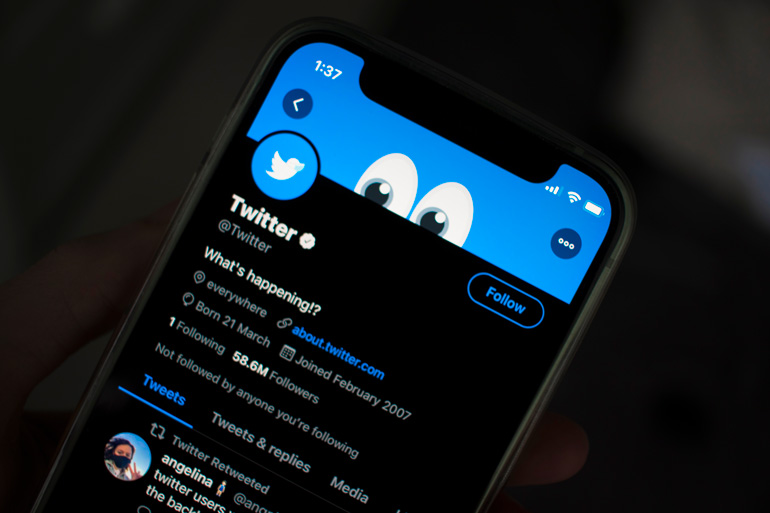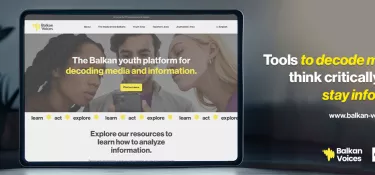
Best practices for digital communication - Twitter : how to use it
Launched in 2006, Twitter is one of the world’s most used social networks. With over 217 million monetisable daily active users, a figure released in February 2022, Twitter is the fourth ranked social network or messaging service allowing access to information.
Definition and key figures
Recognised as the opinion leaders’ network, Twitter has a strong impact and enables its users to access information in real time, express themselves publicly and even comment on live events and programmes. In this way, Twitter has revolutionised communication at a global level, enabling its users and even those who do not have access to mainstream media to follow and contribute to the public debate.
Today, over 83% of world leaders have an account on this platform. It is a social network used especially by politicians, journalists, artists and other people taking a stand and commenting on current affairs. Having a Twitter presence may therefore represent an opportunity to diversify and be part of the conversation.
Why use Twitter ?
Around 9120 tweets are posted every second on Twitter. Clearly, this is a network that can help you reach a different audience, on top of those you are targeting via your other social media accounts. Twitter is an excellent free tool for promoting your activities and allows you to share (and boost, if you wish) content in just a few clicks.
With search engine functionality, Twitter enables you to observe what your competitors are doing and provide users with information about your activities. It also allows you to interact with your followers and address them directly and regularly. The short messages, known as tweets, that you publish may appear at no extra cost in the Google search hits. This makes your Twitter account an excellent tool for organic search engine optimisation. To achieve this, you simply need to ensure your posts are always relevant.

How Twitter works
By only allowing you to send short messages, known as tweets and generally limited to 280 characters, Twitter forces you to use language cleverly to condense the gist of your message into a single tweet. Retweets are also common and allow you to reiterate information posted by a third party. When using external content, you absolutely must verify that the information it contains is true, preferably from recognised or official sources.
Aimed at both the general public and decision-makers, Twitter is nevertheless easy to use. Users see news about their favourite people or subject areas in real time via their newsfeeds. Subject areas are chosen by following or subscribing to different Twitter accounts. Unlike Facebook, all posted messages or tweets are public by default, which means that when you follow someone, you can read all their posts. You can also send private messages or retweet public messages as mentioned above. The more a message is retweeted, the more popular it is.
To access the Twitter world, create an account by following these steps :
1- Head to the Twitter registration page and sign up.
2- Enter your email address and a password.
3- You will then need to choose two identifiers: your username, which will appear in the URL of your profile and your fullname, which will be what Twitter users see.
4- Then head to the Home page where you will be able to post messages and read those posted by others.
5- Write your message, then click Tweet to send it. You will become a follower of one or more profiles whose posts you regularly follow via your newsfeed.
6- Your following is the list of people who follow you. The hashtag (#) followed by a key word or phrase (without spaces) can be used to find all the conversations about a particular topic. Retweets can be used to send a tweet from one of your contacts to all of your contacts and thereby increase visibility. Trending topics refer to all the topics mentioned in real time.
Sponsorship
If you want to share your tweet with more people, you can promote your tweet. This allows you to increase its reach and access a larger audience.
To do this, you first need to access your profile and select the tweet that you want to promote. Click or tap View Tweet activity, then Promote your Tweet. If this is the first time you are promoting one of your tweets, you will need to enter your country, time zone and details, and accept the Twitter Advertising Terms.
Once you have completed this step, click Next. You will then be asked to enter the details of your debit/credit card and your billing address. All this information will be securely saved for any future tweets you want to promote. Under Targeting, select the Location you want to target with your post. Under Budget, select the amount you want to spend. You can promote a tweet from $10. The number of estimated engagements for each amount selected will automatically be displayed. To finish, click Confirm spend. Your tweet is now promoted.
Once the promotion cycle has ended, don’t forget to check the performance of your posts. For this, click on your tweet to see the details, then tap Tweet Activity. You will then see the figures for organic and promoted engagements.
Statistics and performance
On Twitter, the main KPIs are the following :
- Follower growth :
- Number of followers.
- Number of new followers.
- Engagement metrics :
- Number of Likes on posts.
- Number of comments on posts.
- Number of retweets on posts.
- Engagement rate :
- Number of profile visits.
- Number of tweet impressions.

Practical advice
- On Twitter, posts are numerous and build up quickly. For greater presence on this social network, don’t hesitate to tweet several times a day to ensure you do not go unnoticed.
- Follow people and influencers who tweet or share information about you. This is an opportunity not to be missed to give your account greater visibility.
- If you do not have any content to post, retweet other content connected with your activities or points of view.
- Use hashtags for greater recognition. In particular, this will help with audience targeting and increase the visibility of your post.
- Follow conversations about your activities by using hashtags.
- Check the option Add location information to your Tweets so that your followers know where you are posting from.
Discover the complete guide : Best Practices for digital communication


